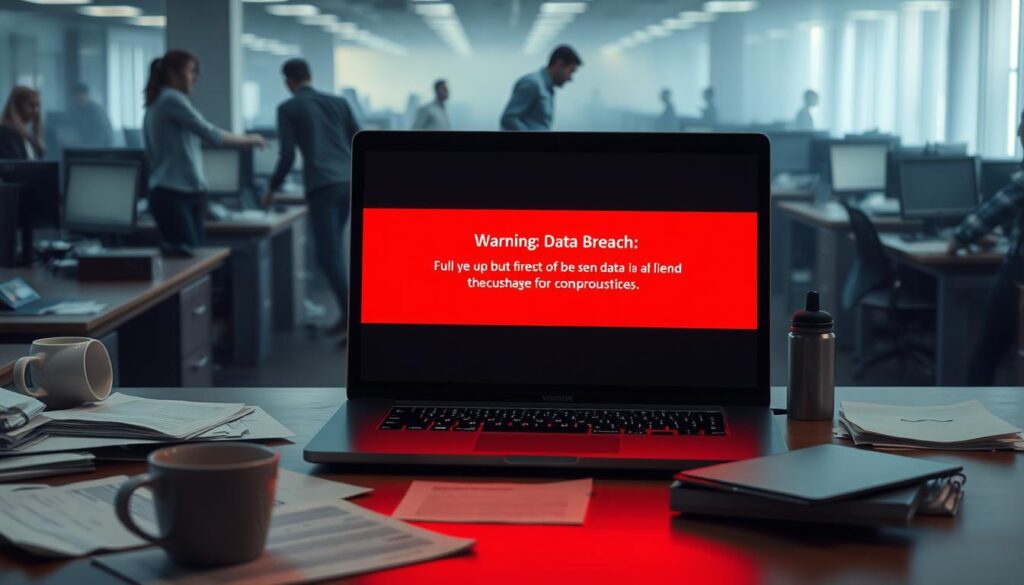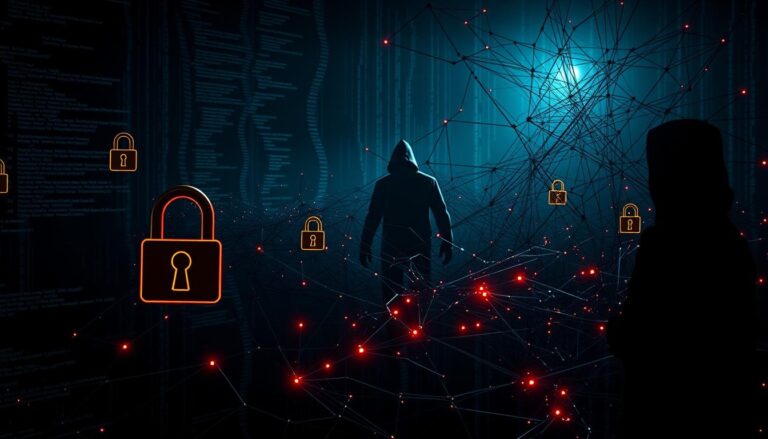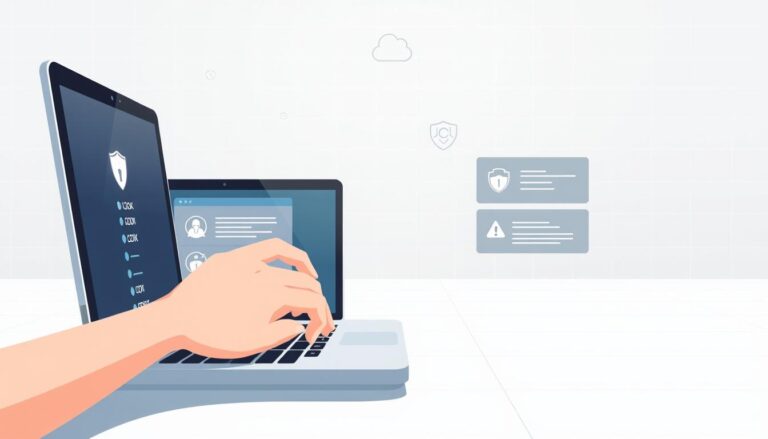Biggest Data Breaches of 2025 (So Far)
This Ultimate Guide lays out the biggest data breach events of 2025 and why they matter to U.S. organizations and people.
Costs keep rising: IBM reports a global average loss of USD 4.44 million and a U.S. average of USD 10.22 million. Highly regulated sectors such as healthcare face steeper costs — about USD 7.42 million — and it takes a median of 241 days to identify and contain an active incident.
Tracking these security events helps leaders see common attack patterns, understand how a data breach differs from other attacks, and prioritize faster detection. Attackers and hackers evolve quickly, and high-profile incidents often affect millions of users, eroding trust and disrupting business operations.
This guide previews trends for the current year, defines key terms, catalogs the largest 2025 cases, and offers actionable steps across people, process, and technology. Early visibility and automated response are strategic priorities to reduce loss and protect access, while employees remain a critical defensive layer.
Key Takeaways
- U.S. organizations face the highest average costs; prevention and rapid response matter.
- Long detection times drive major losses — aim for early visibility and automation.
- Understand how a data breach differs from other attacks to shape defenses.
- Employees and identity controls are core lines of defense for access protection.
- This guide combines real examples and stats to help business and technical teams act.
State of Data Breaches in 2025 (So Far): Scope, Trends, and Why It Matters
Rising costs and long detection windows define the 2025 landscape. IBM reports a global average loss of USD 4.44 million and USD 10.22 million in the U.S. That gap reflects regulatory exposure, complex remediation, and higher legal risk for American organizations.
On average it takes 241 days to identify and contain an incident. Extended dwell time amplifies business interruption and keeps sensitive information at risk for months. For credential-related cases, detection can take as long as 186 days.
Phishing leads initial vectors at 16%, and compromised credentials account for about 10%. These numbers show identity-first defenses and faster detection are essential to limit attacker access.
Healthcare still faces the steepest average hit — roughly USD 7.42 million — making rapid notification and resilience investments critical. Modern incidents often mix extortion, theft, and operational disruption, while attackers monetize stolen records through brokers and repeat targeting.
- What leaders should do: prioritize early detection, identity controls, and automated response to cut time-to-containment and reduce reputational and financial harm.
What Counts as a Data Breach versus a Cyberattack
Not every cyberattack is a breach. The distinction comes down to whether an unauthorized party viewed, copied, or removed confidential information. Service outages that only disrupt availability do not meet that threshold.
Unauthorized access to sensitive information: the defining line
A breach happens when someone gains unauthorized access to records, systems, or devices that hold private material. Legal and regulatory duties usually hinge on whether information was accessed or acquired by an outsider.
Examples: ransomware and physical theft vs. DDoS disruptions
Ransomware that encrypts and exfiltrates files is a breach because files were taken or exposed. Likewise, a stolen laptop with unencrypted confidential information is a breach.
By contrast, a volumetric DDoS that only knocks a site offline is an attack on availability, not a breach, if no records were accessed.
- Social engineering often precedes a breach by tricking users into granting access.
- Classify assets and enforce access controls so exposure, not just downtime, guides response.
| Incident type | Access to information? | Typical response focus |
|---|---|---|
| Ransomware with exfiltration | Yes | Contain, notify, remediate, forensics |
| Physical theft of device | Yes (if unencrypted) | Recover, notify, encryption review |
| Volumetric DDoS | No | Mitigate availability, traffic filtering |
Biggest Data Breaches of 2025 (So Far)
High-profile exposures in 2025 show how concentrated repositories of tax and payroll records draw persistent criminal interest.
The Pakistan Federal Board of Revenue reportedly had ~150 GB exposed. The files included CNICs, names, phone numbers, addresses, and tax records. Such collections are valuable to hackers because static identity markers fuel identity fraud and financial scams.
Pakistan Federal Board of Revenue: 150 GB exposed
Attackers gain access to national registries to assemble profiles for targeted phishing and account takeover. That long-tail risk persists when verification still relies on unmoving identifiers.
Habib Bank Limited: employee and financial information targeted
Reports indicate employee records, bank account details, education history, and salary data were involved. Compromised personnel files create downstream risks for individuals and weaken internal controls.
Other significant 2025 exposures under investigation
Authorities are still scoping several incidents, so numbers may change as investigations confirm what was accessed. Forensics and scoping challenges often drive notification decisions and remediation timing.
- Common attacker goals: monetization on dark web markets, targeted phishing, and account takeover using harvested identity elements.
- Organizational advice: strengthen identity controls, perform thorough discovery, limit access, and pre-plan communications and support services like credit monitoring.
| Incident | Primary exposed items | Immediate risk |
|---|---|---|
| Federal tax registry (Pakistan) | CNICs, names, phones, addresses, tax records | Identity fraud, targeted financial schemes |
| Habib Bank Limited | Employee records, bank account details, salaries | Account takeover, payroll fraud, insider targeting |
| Other 2025 cases (under review) | Varied personal and financial information | Cross-border fraud, long-term misuse |
Late-2024 Mega Incidents Shaping 2025 Risk Landscape
Several massive exposures from late 2024 continue to feed criminal campaigns this year. Those large lists let attackers test accounts and craft convincing lures that lead to fresh compromises.

National Public Data leak: nearly 3 billion people
The August 2024 broker exposure held records for almost 3 billion people. Such scale means phone numbers, names, and other identifiers circulate widely.
Why it matters: broad availability of identifiers makes credential stuffing and targeted social engineering far easier for hackers.
AT&T 2024 exposure: ~110 million accounts via a partner
AT&T confirmed about 110 million accounts were exposed through a third-party service. This shows even large companies face supply-chain risk.
“Mother of all breaches” (Jan 2024): 26+ billion records
A massive compilation of more than 26 billion records lets attackers correlate profiles across sources. That boosts success rates for automated attacks and identity fraud.
| Incident | Scale | Primary risk |
|---|---|---|
| National Public Data | ~3 billion people | Widespread targeted phishing and impersonation |
| AT&T (third-party) | ~110 million accounts | Supply-chain exposure; account takeover |
| “Mother of all breaches” | 26+ billion records | Credential stuffing; cross-source correlation |
Recommended actions: apply rate-limiting, anomaly detection, stronger identity proofing, and continuous vendor risk management. Train users and employees to recognize smarter lures that reuse leaked information.
How Data Breaches Happen: Common Attack Vectors and Examples
Criminals chain simple techniques together: social tricks, stolen passwords, software flaws, and lost devices. These paths let attackers move from a single point of contact to broad access inside a company.
Phishing and social engineering: stealing credentials and delivering malware
Phishing is the top initial vector, driving about 16% of incidents. Fraudulent email, SMS, and social posts trick users into handing over credentials or running malware.
Once malware is installed, attackers can pivot across the network and escalate privileges.
Ransomware: locking, stealing, and extorting sensitive information
Ransomware now blends encryption with extortion, stealing files and threatening publication. The average cost of a ransomware incident is roughly USD 5.08 million, excluding any ransom payments.
Stolen or weak passwords and credential stuffing
Compromised credentials account for about 10% of incidents and may take months to detect. Reused passwords let attackers test combinations across accounts for large-scale takeover.
Exploiting software vulnerabilities and supply chain weaknesses
Vulnerabilities in software, APIs, and third-party tools can expose many organizations at once. Supply chain attacks like SolarWinds show how a single compromised update spreads risk widely.
Human error, IT failures, and misconfigurations
Human error causes roughly 26% of incidents, and IT failures about 23%. Misconfigurations, excess privileges, and outdated systems create easy access paths for hackers.
Physical security compromises and device theft
Lost laptops, phones, and drives remain a practical threat. Encryption-at-rest and remote wipe tools are key to preventing attackers from using stolen devices to steal data.
| Vector | What it enables | Example |
|---|---|---|
| Phishing / social engineering | Credentials theft, malware delivery, lateral movement | Email lures; targeted SMS campaigns |
| Ransomware | Encryption, data exfiltration, extortion | Colonial Pipeline (credential use) |
| Credential stuffing | Account takeover across services | 23andMe (2023 incident) |
| Software / supply chain | Widespread compromise of systems | SolarWinds (2020) |
Defensive steps: apply phishing-resistant MFA, use password managers, enforce least-privilege access, patch promptly, segment networks, and deploy EDR/XDR with continuous monitoring. Train employees — they are both the most targeted and the best first line of defense.
The Business Impact in the United States: Costs, Sectors, and Regulations
An incident that touches sensitive customer files often triggers layered costs beyond the technical fix.
IBM’s 2025 figure: the average U.S. cost of a data breach is USD 10.22 million. Major drivers include lost business (USD 1.38M), detection and escalation (USD 1.47M), post-breach response (USD 1.20M), and notification (USD 0.39M).
Healthcare faces the highest per-organization hit because PHI, payment cards, and social security numbers raise regulatory fines and remediation spend. Legacy systems, unpatched vulnerabilities, and third-party partners make containment slower and drive up escalation costs.

Regulatory timelines shape action. CIRCIA mandates 72-hour reporting for covered critical infrastructure. HIPAA requires HHS and patient notices for PHI incidents. All 50 states have notification laws, and GDPR adds a 72-hour rule for EU residents.
- Practical steps: pre-stage forensics retainers, breach counsel, and communications plans.
- Protect confidential information with tokenization, network segmentation, and strict access controls.
- Train employees, enforce password hygiene, and apply least-privilege to cut attacker access.
Bottom line: well-governed cybersecurity investments reduce material risk and lower long-term costs for U.S. business and organizations.
Breach Prevention and Response Best Practices for 2025
Preventing major security incidents starts with small, repeatable controls that reduce risk across people, systems, and software.
Deploy security AI and automation to speed detection, triage, and containment. Organizations that adopt these tools resolve incidents roughly 80 days faster and lower average breach costs by about USD 1.9 million.
Identity and access controls
Prioritize phishing-resistant MFA, strong password policies, single sign-on, and least-privilege access. Run continuous access reviews to limit exposed accounts and credentials.
Employee training and phishing resilience
Train employees on social engineering, secure information handling, and clear reporting steps. Human error drives many incidents, so routine drills matter.
Patch, harden, and isolate
Keep software inventories, apply timely patches, enforce configuration baselines, and segment networks. These steps remove common footholds attackers use to move laterally.
Resilience and incident readiness
Maintain immutable backups, test restores, and iterate incident response plans. Include roles, containment steps, forensic collection, notification timelines, and recovery communications.
“Align cybersecurity investment with business risk and ensure executive sponsorship for lasting improvements.”
| Focus area | Primary action | Expected benefit |
|---|---|---|
| AI & automation | Automated detection and triage | Faster containment; cost reduction (~USD 1.9M) |
| Identity & access | MFA, SSO, least privilege | Fewer account compromises |
| Operations & resilience | Patching, backups, segmentation | Lower downtime; limited lateral movement |
Final step: protect critical information with discovery, encryption, DLP, email filtering (DMARC), and strong endpoint controls like EDR/XDR and disk encryption. Executive backing and cross-functional playbooks keep these best practices sustainable.
Conclusion
Organizations that shorten response times and harden identity controls see far smaller losses after major incidents.
IBM’s 2025 findings show AI and automation cut detection and containment time, lowering the average U.S. loss of USD 10.22 million. Reduce dwell time to shrink financial and reputational impact.
Focus on identity-first security: stronger credentials, phishing-resistant MFA, and continuous access reviews stop many attackers from moving from a single compromised account to broader access.
Secure systems and devices, segment networks, and encrypt critical files so exposed information — from payment card details to Social Security numbers — is far less useful to hackers.
Pre-stage incident response, test regulatory reporting workflows, and keep staff trained. A risk-informed, data-centric approach plus AI-enabled detection helps protect users, preserve company trust, and prepare for the next major incident.
FAQ
What were the largest breaches reported in 2025 so far?
Several major incidents surfaced in 2025, including a large tax-record exposure from Pakistan’s Federal Board of Revenue and a compromise at Habib Bank Limited that targeted employee and financial information. Investigations continue into other significant exposures this year, with forensic teams tracking how attackers accessed sensitive systems and what records were taken.
How has the overall scope of incidents changed in 2025 compared with prior years?
The scope widened: attackers continued to compile massive aggregated datasets from prior years while launching new intrusions. Trends show more automated credential stuffing, expanded use of social engineering, and faster deployment of AI tools for reconnaissance. Regulatory scrutiny and faster notification rules are driving quicker public disclosure, which makes the incident landscape feel more visible.
What distinguishes a breach from a cyberattack?
A cyberattack is any malicious attempt to disrupt, damage, or access systems. A breach specifically means unauthorized access to or disclosure of sensitive information, such as Social Security numbers, financial records, or confidential employee files. A DDoS that only disrupts service may not qualify as a breach unless data were exposed or exfiltrated.
Can you give clear examples of breach versus non-breach incidents?
Yes. Ransomware that encrypts files and also steals records constitutes a breach when exfiltration occurs. Physical theft of unencrypted laptops containing payroll files is a breach. By contrast, a DDoS attack that only interrupts a website without exposing records is an attack but not a breach under most legal definitions.
How do attackers commonly gain access to sensitive information?
Common vectors include phishing and social engineering to steal credentials, credential stuffing from reused passwords, exploiting unpatched software vulnerabilities, supply-chain compromises, misconfigured cloud storage, and physical device theft. Human error and weak identity controls remain major contributors.
What role do stolen credentials play in modern incidents?
Stolen or weak passwords are a top enabler of unauthorized access. Attackers use credential stuffing — automated login attempts using leaked username/password pairs — to take over accounts. Multi-factor authentication and strong password hygiene significantly reduce that risk.
How costly are breaches for U.S. organizations in 2025?
Breach costs remain high. Recent industry reports place the average U.S. incident cost around .22 million in 2025, driven by factors such as forensic investigation, regulatory fines, legal settlements, notification and credit protection for victims, lost business, and remediation efforts.
What regulatory rules should U.S. businesses follow after an exposure?
Companies must navigate federal and state laws. Key requirements include HIPAA for health data, state breach notification statutes with varying deadlines, and emerging federal rules like CIRCIA’s 72-hour disclosure expectations for critical infrastructure. International firms must also consider GDPR where applicable.
How can organizations reduce their exposure to ransomware and extortion?
Adopt layered defenses: regular, tested backups kept offline, prompt patching, endpoint detection and response, network segmentation, and strict access controls with least-privilege policies. Strong employee training on phishing, plus incident response plans and cyber insurance where appropriate, also help mitigate impact.
What are the most effective identity and access management practices?
Implement multi-factor authentication (MFA) everywhere, enforce strong unique passwords or passkeys, use single sign-on with conditional access, and apply least-privilege roles. Regularly review account privileges and remove dormant or unnecessary access to limit attack surface.
How should companies prepare their incident response for faster containment?
Create a documented incident response plan, run regular tabletop exercises, establish clear communication and notification workflows, keep forensic tools ready, and automate detection and isolation where possible. Pre-authorized legal and PR playbooks speed regulatory compliance and public disclosure.
Are there specific technical controls that reduce risk from supply-chain attacks?
Yes. Enforce vendor security assessments, require secure development practices from suppliers, monitor software composition for vulnerable libraries, use code signing, restrict third-party integrations by policy, and apply zero-trust segmentation to limit lateral movement if a vendor is compromised.
What should individuals do if their Social Security number or financial information appears in a leak?
Immediately place fraud alerts with credit bureaus, consider a credit freeze, monitor bank and card accounts closely, change passwords on affected services, enable MFA, and enroll in identity monitoring if offered. Report suspected identity theft to the Federal Trade Commission and local law enforcement when necessary.
How is AI being used to both attack and defend systems in 2025?
Attackers employ AI to craft convincing phishing messages, automate reconnaissance, and scale credential-stuffing campaigns. Defenders use AI for faster anomaly detection, automated triage, and response playbooks. Proper governance is critical to ensure defensive models don’t introduce bias or blind spots.
What immediate steps should a small business take after discovering unauthorized access?
Contain and isolate affected systems, preserve logs and evidence, reset compromised credentials, notify legal counsel and relevant authorities per laws, inform impacted individuals when required, and begin forensic investigation. Prioritize restoring backups and patching exploited vulnerabilities.
How often should organizations test backups and incident plans?
Test backups and full recovery procedures at least quarterly, and run incident response tabletop exercises semiannually or after major changes. Regular testing validates assumptions, improves coordination, and reduces recovery time during real events.







